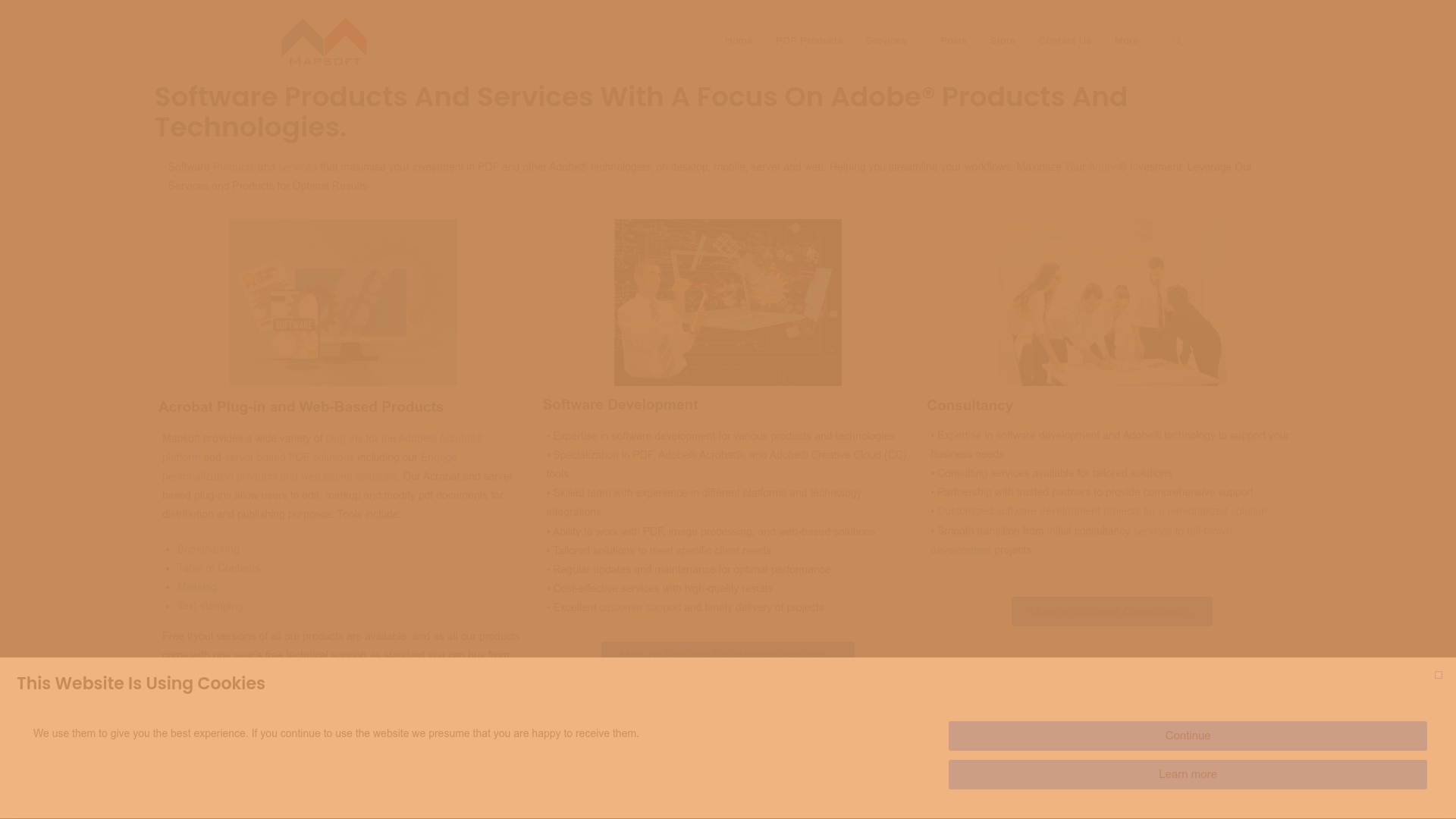Everyone wants to get more done in less time but only a few actually manage it. You might think it comes down to working harder. But research shows that simply adding hours is not the answer. Professionals who implement structured time management can actually reclaim up to 20 percent of their working week. Most surprising of all, the biggest leaps in productivity come not from pushing yourself nonstop but from learning to plan, prioritize, and protect your time in entirely new ways.
Table of Contents
- Understand The Importance Of Time Management
- Set Clear Goals And Prioritize Tasks
- Use The Pomodoro Technique For Focus
- Implement Time Blocking For Better Scheduling
- Leverage Digital Tools And Apps
- Evaluate And Adjust Your Strategies Regularly
- Foster A Productive Work Environment
Quick Summary
| Takeaway | Explanation |
|---|---|
| Master time management for success | Effective time management enhances productivity and reduces stress, creating structured pathways for goal achievement. |
| Set SMART goals for clarity | Specific, measurable, achievable, relevant, and time-bound goals improve focus and increase the likelihood of success. |
| Utilize the Pomodoro Technique | Work in 25-minute intervals followed by breaks to maintain concentration and reduce mental fatigue. |
| Implement time blocking strategies | Dedicate specific time slots to tasks, minimizing distractions and improving workflow efficiency. |
| Regularly evaluate your techniques | Continuously assess and refine your time management strategies to adapt to changing work demands and enhance productivity. |
1: Understand the Importance of Time Management
Time management represents more than just scheduling tasks. It is a strategic approach to controlling how you spend your professional and personal hours, ultimately determining your overall productivity and success. Without deliberate time management techniques, professionals often find themselves overwhelmed, stressed, and unable to achieve their most important goals.
Effective time management allows you to maximize your potential by creating structured pathways for accomplishing objectives. When you understand and apply core time management principles, you gain significant advantages in both workplace performance and personal development.
The core benefits of mastering time management include:
- Reduced stress levels and improved mental clarity
- Enhanced ability to prioritize critical tasks
- Increased professional productivity
- Better work life balance
- More predictable and controlled daily workflow
According to Harvard Business Review, professionals who implement structured time management strategies can reclaim up to 20% of their working week. This translates into approximately one full day of additional productive time that can be reinvested into high-value activities.
Professional success hinges on your capacity to strategically allocate your time and energy. By developing a proactive approach to managing your hours, you transform random activities into purposeful actions. This shift allows you to move from reactive task completion to intentional goal achievement.
Recognizing time as a finite and irreplaceable resource is the first critical step in effective time management. Each moment represents an opportunity for progress, learning, or meaningful contribution. The most successful professionals view time not just as a commodity, but as their most valuable personal asset.
Implementing robust time management techniques requires self awareness, discipline, and continuous refinement. It is not about working harder, but working smarter by understanding your personal productivity rhythms, eliminating unnecessary distractions, and focusing on tasks that generate meaningful outcomes.
2: Set Clear Goals and Prioritize Tasks
Successful time management begins with establishing clear and actionable goals. Without well defined objectives, professionals risk wasting energy on tasks that do not contribute to their overall success. The process of setting goals and prioritizing tasks transforms abstract intentions into concrete, executable plans.
Goal setting is more than simply creating a to do list. It requires strategic thinking and a systematic approach to understanding what truly matters in your professional and personal development. McKinsey Research suggests that professionals who set specific, measurable goals are 10 times more likely to achieve them compared to those with vague aspirations.
To effectively set and prioritize goals, consider these critical strategies:
- Break large goals into smaller, manageable tasks
- Use the Eisenhower Matrix to categorize tasks by urgency and importance
- Regularly review and adjust goals based on changing circumstances
- Set realistic timelines for goal achievement
- Create accountability mechanisms
Prioritization techniques are essential for transforming goals from conceptual ideas into actionable plans. The most effective approach involves understanding the difference between urgent and important tasks. Not everything that demands immediate attention truly contributes to your long term objectives.
Professionals can leverage the SMART goal framework to enhance their goal setting process:
- Specific: Clearly define what you want to accomplish
- Measurable: Establish concrete criteria for measuring progress
- Achievable: Set realistic and attainable goals
- Relevant: Align goals with broader professional objectives
- Time bound: Create specific deadlines for goal completion
Implementing a robust goal setting and prioritization system requires consistent practice and self reflection. It is not a one time event but an ongoing process of refining your approach, understanding your capabilities, and adapting to changing professional landscapes.
By developing a disciplined approach to goal setting and task prioritization, you create a powerful framework for personal and professional growth. This method allows you to focus your energy on activities that generate the most significant impact, ultimately driving your success and productivity.
3: Use the Pomodoro Technique for Focus
The Pomodoro Technique represents a powerful time management strategy designed to enhance concentration and productivity by breaking work into focused intervals. Named after the tomato shaped kitchen timer used by its creator Francesco Cirillo, this technique transforms how professionals approach complex tasks and manage their mental energy.
How the Pomodoro Technique Works
At its core, the Pomodoro Technique involves working in concentrated 25 minute intervals followed by short breaks. This structured approach helps combat mental fatigue and maintains high levels of cognitive performance. Journal of Applied Psychology research demonstrates that structured work intervals can improve focus and reduce overall task completion time by up to 40%.
Key implementation steps include:
- Set a timer for 25 minutes of uninterrupted work
- Focus exclusively on one task during this period
- Take a 5 minute break after each completed interval
- After four complete intervals, take a longer 15 30 minute break
The technique offers multiple psychological and productivity benefits. By creating artificial time constraints, professionals trigger a sense of urgency that minimizes procrastination and increases task commitment. The structured breaks prevent mental burnout and provide opportunities for brief recovery.
Critical advantages of the Pomodoro Technique include:
- Reduces decision fatigue by creating clear work boundaries
- Minimizes potential distractions through dedicated focus periods
- Provides measurable progress tracking
- Helps manage complex or intimidating projects
- Improves overall time awareness
Successful implementation requires discipline and practice. Professionals should select tasks appropriate for 25 minute intervals and minimize potential interruptions. Digital tools and smartphone apps can help track Pomodoro intervals, making the technique more accessible.
While initially designed for individual productivity, many teams have adapted the Pomodoro Technique for collaborative work. By synchronizing focus periods, teams can create collective momentum and reduce unnecessary meetings or interruptions.
Ultimately, the Pomodoro Technique transforms time management from an abstract concept into a practical, actionable strategy. It empowers professionals to take control of their productivity by understanding and optimizing their cognitive energy.
4: Implement Time Blocking for Better Scheduling
Time blocking transforms traditional scheduling by converting generic calendar entries into strategic, intentional work segments. This advanced time management technique allows professionals to plan their day with precision, allocating specific time windows for different types of tasks and dramatically improving overall productivity.
What is Time Blocking?
Time blocking involves dedicating predetermined time segments to specific tasks or categories of work, creating a structured approach to daily scheduling. Unlike traditional to do lists, this method requires committing exact time intervals for each activity, reducing decision fatigue and minimizing potential distractions.
Harvard Business Review research indicates that professionals who implement time blocking can reclaim up to 20% of their working hours by creating intentional boundaries and minimizing unplanned interruptions.
Key strategies for effective time blocking include:
- Categorize tasks by complexity and required mental energy
- Assign specific time slots based on personal productivity rhythms
- Create buffer periods between task blocks
- Protect designated work intervals from unnecessary interruptions
- Review and adjust blocking strategy weekly
Benefits of Time Blocking
Professionals who master time blocking experience significant advantages in managing complex workloads. By creating structured time segments, individuals can:
- Reduce context switching
- Improve focus and concentration
- Create predictable workflow patterns
- Minimize decision fatigue
- Track productivity more accurately
Successful time blocking requires understanding your personal energy cycles and matching task complexity with your most productive hours. Some professionals prefer scheduling deep work tasks during morning hours when mental clarity is highest, while reserving administrative tasks for periods of lower energy.
Digital tools and calendar applications can support time blocking by providing visual representations of scheduled intervals and allowing easy modifications. Many productivity platforms now offer integrated time blocking features that help professionals design and maintain their ideal work schedule.
Implementing time blocking is not about rigid adherence but creating a flexible framework that adapts to changing professional demands. By treating time as a strategic resource, professionals can transform their approach to work, achieving greater efficiency and maintaining better work life balance.
5: Leverage Digital Tools and Apps
Digital tools and applications have revolutionized time management, offering professionals sophisticated solutions for tracking, organizing, and optimizing their productivity. The right technology can transform how we approach work, converting complex tasks into streamlined processes.
Understanding Digital Productivity Tools
Modern productivity applications go beyond simple task lists. They integrate advanced features like artificial intelligence, synchronization across devices, and real time collaboration capabilities. Gartner Research suggests that organizations using integrated productivity tools can increase operational efficiency by up to 35%.
Key considerations when selecting digital productivity tools include:
- Cross platform compatibility
- User friendly interface
When evaluating digital tools, professionals should prioritize applications that integrate seamlessly with existing workflows. For those working with collaboration strategies across teams, selecting tools that enable smooth communication becomes critical.
Top categories of digital time management tools include:
- Project management platforms
- Time tracking applications
- Task prioritization software
- Calendar and scheduling tools
- Automation workflows
Maximizing Digital Tool Effectiveness
Successful implementation requires more than simply acquiring technology. Professionals must develop strategic approaches to tool integration, understanding how each application supports specific productivity objectives.
Mobile applications have become particularly powerful, allowing professionals to manage tasks and track progress from anywhere. Cloud based synchronization ensures that your productivity system remains consistent across smartphones, tablets, and desktop computers.
Advanced digital tools now incorporate machine learning algorithms that can predict task completion times, suggest optimal work intervals, and identify potential productivity bottlenecks. These intelligent systems transform time management from a manual process to an adaptive, data driven strategy.
Ultimately, digital tools are not replacements for personal discipline but powerful amplifiers of individual productivity. By selecting and mastering the right applications, professionals can create more efficient, responsive, and intelligent work environments.
6: Evaluate and Adjust Your Strategies Regularly
Successful time management is not a static process but a dynamic journey of continuous improvement. Professionals must develop a systematic approach to reviewing and refining their productivity strategies to ensure ongoing effectiveness and adaptation to changing work environments.
The Importance of Regular Strategy Assessment
MIT Sloan Management Review research demonstrates that organizations and individuals who regularly evaluate their performance are 40% more likely to achieve sustainable productivity gains. This principle applies directly to personal time management techniques.
Key elements for effective strategy evaluation include:
- Tracking actual time spent on tasks
- Comparing planned versus completed work
- Identifying recurring productivity obstacles
- Measuring personal energy levels and performance
- Documenting successful and unsuccessful approaches
Professionals should approach strategy assessment with objective self reflection. This means moving beyond subjective feelings and utilizing quantitative data to understand true productivity patterns. Digital tools and time tracking applications can provide valuable insights into actual work behaviors.
Recommended evaluation frequencies:
- Weekly quick review of task completion rates
- Monthly comprehensive strategy assessment
- Quarterly deep dive into productivity systems
- Annual complete workflow redesign
Adapting your time management approach requires flexibility and willingness to experiment. What works brilliantly today might become less effective as your professional responsibilities evolve. By maintaining a growth mindset, you transform time management from a rigid system into an adaptive, personalized framework.
Additionally, professionals should remain open to emerging productivity methodologies and technological innovations. The landscape of work is continuously changing, and successful time management requires staying informed about new strategies and tools.
Ultimately, regular evaluation is not about achieving perfection but about incremental improvement. Small, consistent adjustments compound over time, leading to significant enhancements in personal and professional productivity. The most effective time management strategy is one that you continuously refine and customize to match your unique work style and objectives.
7: Foster a Productive Work Environment
Creating an environment that supports productivity goes far beyond physical workspace design. It encompasses psychological, technological, and personal factors that collectively influence professional performance and time management effectiveness.
Physical and Psychological Workspace Design
Stanford University Research indicates that purposefully designed work environments can increase productivity by up to 25%. This involves understanding how spatial arrangement, lighting, ergonomics, and sensory experiences impact cognitive performance.
Critical elements for establishing a productive workspace include:
- Minimizing visual and auditory distractions
- Ensuring comfortable temperature and lighting
- Creating dedicated work zones
- Maintaining organized and clean surroundings
- Incorporating elements that reduce stress
Professionals should pay special attention to digital project management strategies that support seamless workflow integration across physical and virtual environments.
Key psychological factors influencing workspace productivity:
- Personal motivation and goal alignment
- Mental clarity and reduced cognitive load
- Consistent energy management
- Emotional regulation
- Positive reinforcement mechanisms
Technology and Environmental Optimization
Modern productivity depends on creating synergy between personal habits, technological tools, and environmental conditions. This means developing a holistic approach that considers how different elements interact to support or hinder professional performance.
Sound management plays a crucial role in workspace design. Background noise levels, acoustic treatments, and strategic use of noise cancellation technologies can significantly impact concentration and mental performance.
Natural elements like plants, access to natural light, and visual connections to outdoor environments have been scientifically proven to enhance cognitive function and reduce workplace stress. By thoughtfully integrating these elements, professionals can create environments that naturally support sustained focus and productivity.
Ultimately, a productive work environment is a personalized ecosystem that evolves with your professional needs. It requires continuous observation, experimentation, and willingness to make incremental adjustments that optimize your unique work style.
The table below provides a comprehensive summary of the seven time management techniques explored in the article, including their key focus, main benefits, and actionable elements for boosting professional productivity.
| Technique | Key Focus | Main Benefits | Action Steps/Highlights |
|---|---|---|---|
| Understand the Importance of Time Management | Recognizing time as a finite, strategic resource | Reduces stress, enhances clarity, improves productivity | Treat time as your top asset, create structure, focus on value-adding activities |
| Set Clear Goals and Prioritize Tasks | Establishing and ranking SMART goals | Maintains focus, aligns tasks to objectives, increases success chance | Use SMART goals, break tasks down, review and adjust priorities |
| Use the Pomodoro Technique for Focus | Work in 25-min intervals with breaks | Increases concentration, reduces fatigue, improves tracking | Set timer for 25 mins, take 5-min breaks, repeat, longer break after 4 cycles |
| Implement Time Blocking for Scheduling | Allocate fixed time slots to specific tasks | Minimizes distractions, reduces context switching, enhances workflow | Block specific hours, align with energy patterns, utilize calendar tools |
| Leverage Digital Tools and Apps | Use tech for organization and productivity | Streamlines workflows, increases efficiency, enables collaboration | Choose integrated apps, use automation, sync tools across devices |
| Evaluate and Adjust Strategies Regularly | Continually review and refine time use | Enables adaptation, continuous growth, sustainable productivity | Weekly and monthly reviews, track time, tweak systems as needs change |
| Foster a Productive Work Environment | Designing supportive physical and tech settings | Boosts focus, reduces stress, supports cognitive performance | Minimize distractions, improve ergonomics, use plants/natural light, manage sound |
Power Up Your Time Management with Smart PDF Solutions
Are you tired of wasted hours searching for documents or managing repetitive PDF tasks, even after using proven techniques like time blocking or the Pomodoro method? Many professionals reach a plateau in productivity because manual document processes drain valuable focus and energy. You read about setting clear goals and creating efficient workflows, but the real transformation happens when your digital tools are just as streamlined as your daily schedule. Visit Mapsoft.com to discover how you can eliminate PDF bottlenecks and give yourself back more productive time each week.

Imagine automating time-consuming tasks such as converting, merging, or securing PDFs so you can focus on high-impact work. With Mapsoft PDF Hub, you can implement powerful batch workflows and integrate advanced document handling into your Adobe environment. Act now to align your digital processes with your time management goals. Explore Mapsoft’s workflow solutions to boost your productivity and reclaim your workday.
Frequently Asked Questions
What are some key benefits of effective time management?
Effective time management leads to reduced stress, enhanced productivity, better work-life balance, and improved mental clarity. It helps professionals prioritize tasks and maintain a controlled daily workflow.
How can I implement the Pomodoro Technique in my work routine?
To use the Pomodoro Technique, set a timer for 25 minutes to work on a single task without interruptions. After this interval, take a 5-minute break. Repeat this cycle, and after four cycles, take a longer break of 15-30 minutes.
What is time blocking and how can it improve my productivity?
Time blocking involves allocating specific time segments to different tasks throughout your day. It helps reduce context switching, improves focus and concentration, and creates a predictable workflow, enhancing overall productivity.
How often should I evaluate my time management strategies?
It’s recommended to conduct a quick review of task completion rates weekly, a comprehensive strategy assessment monthly, and a deeper evaluation of your productivity systems quarterly. This approach ensures continuous improvement in your time management techniques.



